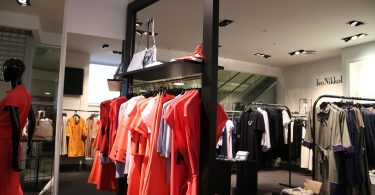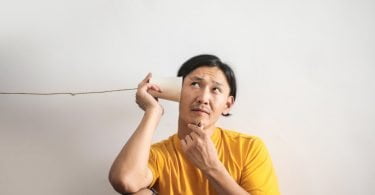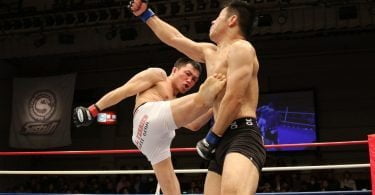Earlier this month, Japan made headlines all over the world for the backlash that erupted after the crowning of the new Miss Universe Japan. Ariana Miyamoto, the 20-year-old from Nagasaki, was crowned on March 12th, but immediately received comments and complaints that she doesn’t look Japanese enough to have the crown. Miyamoto’s mother is Japanese but her father is African-American, officially making her half-Japanese or, in the words of popular slang these days, a ‘hafu.’
Once again, Japan seems to have shocked the rest of the world for being so small-minded, and has received criticism from Western countries for not accepting biracial or biethnic people into the country. But simply viewing Japan as racist discredits a country that is deeply founded in values. This story goes far beyond that, and speaks volumes about Japan’s history, its young people today, and its relationship with the rest of the world.
Japanese Culture
Being half-Japanese has been nothing but a blessing to me my whole life. I’ve grown up in the West, but have also had the good fortune to be brought up and experience an amazing and unique culture. Japan is a country not quite like any other, and I believe that most of its individuality comes from its persistent dedication to its history and the past. Respecting tradition and ancestry is a huge part of being Japanese, but it is also why Japan as a country can seem so alien to foreigners. Crucially, though, it is also the key thing that makes Japan so interesting and so welcoming.
There would be no point in trying to deny that there is a certain amount of stigma attached to being foreign in Japan. In a country where only around 1.5% of the population are immigrants, it is almost impossible to banish this stigma altogether. There are plenty of countries with similar population densities, but it just so happens that Japan is an emerging economic and technological force, and it therefore faces more scrutiny from the Western world. This demographic in Japan does lead to a curiousness and uncertainty about foreigners – but it is just that. If you know or understand any Japanese people, you will know that there is so little animosity, hatred, or resentment in the culture at all. It’s just not in their nature.

Japan and Image
Image, however, is something that most Japanese people concern themselves with; especially the younger generation, who are more influenced by Western culture. The concerns raised by Japanese people about Miyamoto’s win arise from their deep-rooted attachment to the Japanese image. Although it seems difficult to separate the two in this case, it has little to nothing to do with her race. News reports that claimed Japanese people were offended because she is a ‘gaijin’ are fundamentally inaccurate. The Japanese word ‘gaijin’ means foreigner, and is mostly applied to white Westerners who visit the country. For example, when my American Aunt visited Japan, she was referred to as a ‘gaijin.’ When I vist, I am a ‘hafu’ too, just like Miyamoto.
The responses of many Japanese people came from a concern that Miyamoto doesn’t represent the ‘normal look’ of a Japanese woman. And while Japan clearly has some way to go in accepting diversity, it is understandable that some young women would feel that she doesn’t look like them. Certain comments reported in articles by the likes of Emi Foulk from UCLA, have missed the point of these concerns entirely.
She critcised Japanese people for wanting their beauty contestants to look ‘average.’ Does she mean then that all Japanese people look average? That, overall, distinct Oriental features are average? I have no doubts that Miyamoto is beautiful and will represent Japan admirably, but I can also understand why some Japanese people might feel that they don’t relate to her. While that’s no excuse for aggressive comments about anyone’s appearance, it does show that this is about much more than just racism.

Japan and the Modern-day
Despite the ways in which many news reports seem to be presenting Japan, as a country it has advanced hugely in recent years when it comes to race and ethnicity. ‘Hafu’ people of all races have been surpassing fully Japanese people when it comes to modelling and beauty campaigns. While the West is taking on more Asian models, Japan is embracing a more European look for many of its major brands and adverts. This shows a natural interest from the Japanese towards the rest of the world and a different ‘look.’
I was once told by a Japanese friend that, if I ever needed work, I should move to Japan and take up modelling. Being half and half would, apparently, make me instantly successful. The ‘hafu’ look sells well in Japan, and I’m sure Miyamoto has been an inspiration to many young women. As Laura Perez Tagaki told NBC News “It’s was actually about time that a mixed race Japanese girl won the Miss Universe pageant.”
But this desire for a different look has probably also created some resentment in Japan, especially amongst working models, or young people who dream of becoming them. Statistically, ‘hafu’ models are overtaking Japanese models in their own country, appearing in magazine and TV adverts, and now even delving into acting as well as modelling. It’s understandable then that some of the comments directed at Miyamoto may have stemmed from petty jealousy, or understandable concerns that you need to be bi-racial to be successful.
In order to understand this, it is important to understand how limiting it is to be brought up in Japan, even now. It is much easier for someone from the West to travel to Japan and find success, than it is for someone Japanese to leave Japan. There are complex issues surrounding money and education, difficulties with speaking English, as well as family-ties and a culture that expects you to contribute to Japanese society alone.
The Best of Both Worlds
Miyamoto responded quickly to her critics in the following video, saying that, while she might not look completely Japanese on the outside, she feels Japanese on the inside. Fundamentally, for the majority of Japanese people, that will be all that counts.
As a ‘hafu’ I can understand some of the comments that Miyamoto received, although I don’t agree with them. Being half-Japanese is a unique experience. It means blending into a culture so old and still so important that you often get looked at differently, or people touch your skin or play with your hair. There’s a childish intrigue of Japanese people towards outsiders, but an even greater one towards those of us that seem like them, but not completely. It’s something that Japan has been working on over the years, and it’s probably going to take a while to get there. But it’s still progress.
As happy as the British and American press are to slam Japan for being old-fashioned, I think everyone is overlooking the one important thing – that Miyamoto probably understands these concerns herself. Being raised in Japan or with Japanese culture firmly embedded into your skull means comprehending and accepting Japan’s traditions and, consequently, some of its failings. She is likely much more aware than I am of what it’s like to live in modern-day Japan, where people are desperate to travel but don’t know how, and are seeing more and more foreigners enter their country for business and pleasure. These reactions might seem fickle to many, but it comes from a history and lack of diversity that still exists in Japan. It has not developed, as many racial stereotypes and intolerances have in the West. And until people can fully understand Japan, I hope they refrain from criticising its personal beliefs.
Miyamoto is a great step forward for modern-day Japan, especially by the younger generations, who are beginning to see a world beyond Japan’s shores. Hopefully, she will encourage many more young Japanese people to travel and meet new people, whilst still maintaining a respect and love for their country, as well as encouraging people from the outside to step in and discover something of a lost world in Japan.








